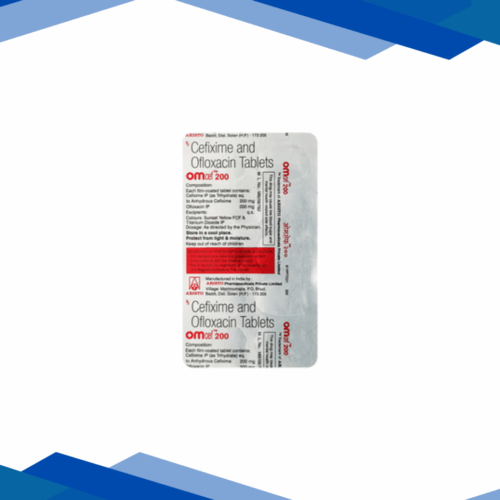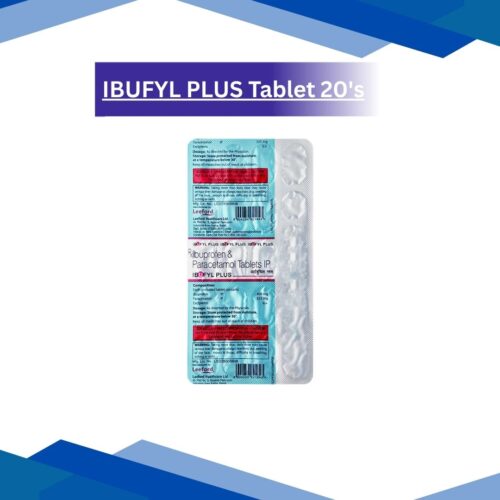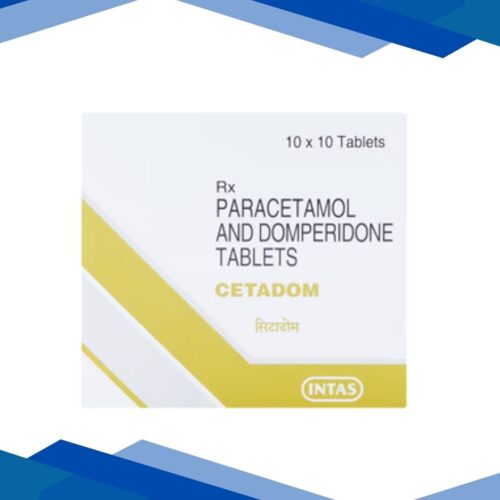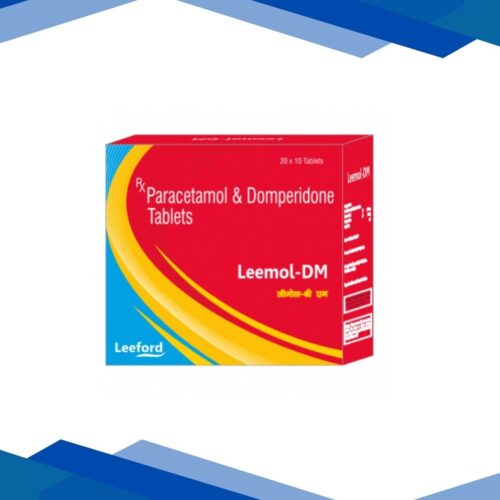ROSTAKE ASP Capsule 10’s
Vowflam
No Prescription yet? Don’t worry! Click Here to Get Online Consultation
Why Prescription is Required?
✅ Providing Right Medicines
Prescriptions are complex documents. We proofread and recheck at various steps to provide you the right medication in the correct form and dose.
⚖️ Helps Comply with the Law
Most medicines cannot be sold without a valid prescription, as per the Drugs and Cosmetics Act, 1940 and Rules, 1945.
Book Appointment with Doctor
VOWFLAM TABLET is a combination of Diclofenac and Paracetamol which belongs to the group of medicines called Non-steroidal Anti-inflammatory drugs (NSAIDs).
Diclofenac Sodium
DICLOFENAC SODIUM
Overview:
Diclofenac Sodium is a non-steroidal anti-inflammatory drug (NSAID) used to reduce pain, inflammation, and swelling in the body. It is commonly prescribed for conditions like arthritis, muscle pain, joint pain, back pain, and menstrual cramps.It blocks the action of prostaglandins, reducing pain and swelling, and helping you move more comfortably.
Classification: Non-steroidal anti-inflammatory drug (NSAID)
Uses:
Diclofenac Sodium is used to relieve pain, swelling, and inflammation in conditions like arthritis, joint pain, and muscle aches. It can also help reduce discomfort after injuries or surgery and ease menstrual cramps. Additionally, it may be used to treat headaches or migraines, helping you feel more comfortable.
How it works:
Diclofenac works by blocking the enzymes called COX-1 and COX-2, which are responsible for producing prostaglandins—the chemicals that cause pain, inflammation, and fever. By reducing prostaglandin production, Diclofenac relieves pain, decreases swelling, and lowers inflammation, helping the body feel more comfortable and move better.
Dosage: As prescribed by your doctor.
Side Effects:
- Stomach upset (nausea, heartburn, or indigestion)
- Headache or dizziness
- Mild swelling
- Rash or itching
- Diarrhea or constipation
Precautions:
Diclofenac should be used carefully in people with stomach or intestinal problems, like ulcers or bleeding, and in those with heart, blood pressure, or kidney issues. Always tell your doctor about any other medications you take, especially blood thinners, other NSAIDs, or heart/kidney drugs. Pregnant or breastfeeding women should only use it if advised by a healthcare professional. While taking Diclofenac, watch for severe stomach pain, unusual bleeding, swelling, or allergic reactions, and report any concerns to your doctor.
Disclaimer:This content is for informational purposes only. Always consult a healthcare provider for medical advice and proper dosage.
Paracetamol
PARACETAMOL
Overview
Paracetamol is a commonly used medication that helps relieve mild to moderate pain and reduce fever. It’s often used for:
Headaches
Toothaches
Muscle and back pain
Menstrual cramps
Cold and flu symptoms
It’s available over-the-counter and is considered safe when used as directed.
Classification
Analgesic and antipyretic agent
Uses
Paracetamol is used for pain relief and fever. It is used to relieve pain in conditions like headache, muscle pain, or dental pain.
How it works
When you produce a fever, your body’s internal thermostat — found in the hypothalamus portion of the brain — is raised to a higher temperature. This new set point is usually induced by pyrogens (substances made during infections) that tell the body to produce more heat as a form of immune defense.
Due to its effects in the brain, paracetamol reduces the production of reactive prostaglandins. Prostaglandins are disease-fighting chemicals released during infection that in turn, raise the body’s temperature set point. By decreasing prostaglandin levels, paracetamol enables the hypothalamus’ temperature control centre to bring the body’s temperature back down to normal, allowing the body to cool down and the fever to subside
Dosage
As directed by the physician
Precautions
Most people can take paracetamol safely, including:
pregnant women
breastfeeding women
children over 2 months of age – lower doses are recommended for young children
always get advice before taking paracetamol if you:
have liver or kidney problems
have problems with alcohol, like long-term alcohol misuse
are very underweight
are taking other medications
Don’t take paracetamol if you’ve had an allergic reaction to it in the past
Side effects
common side effects of paracetamol.
Nausea
Swelling
Vomiting
Pain
Tenderness in the upper abdomen
Sweating
Loss of appetite
Stomach cramps
Diarrhea
Major side effects are as follows:
Dark-colored urine
High fever
Lower backache
Skin having red spots
Rashes
Inflammation
Itching
Sore throat
Ulcers
Breathlessness
Yellowish eyes
Disclaimer
This content is for informational purposes only. Always consult a healthcare provider for medical advice and proper dosage.

















